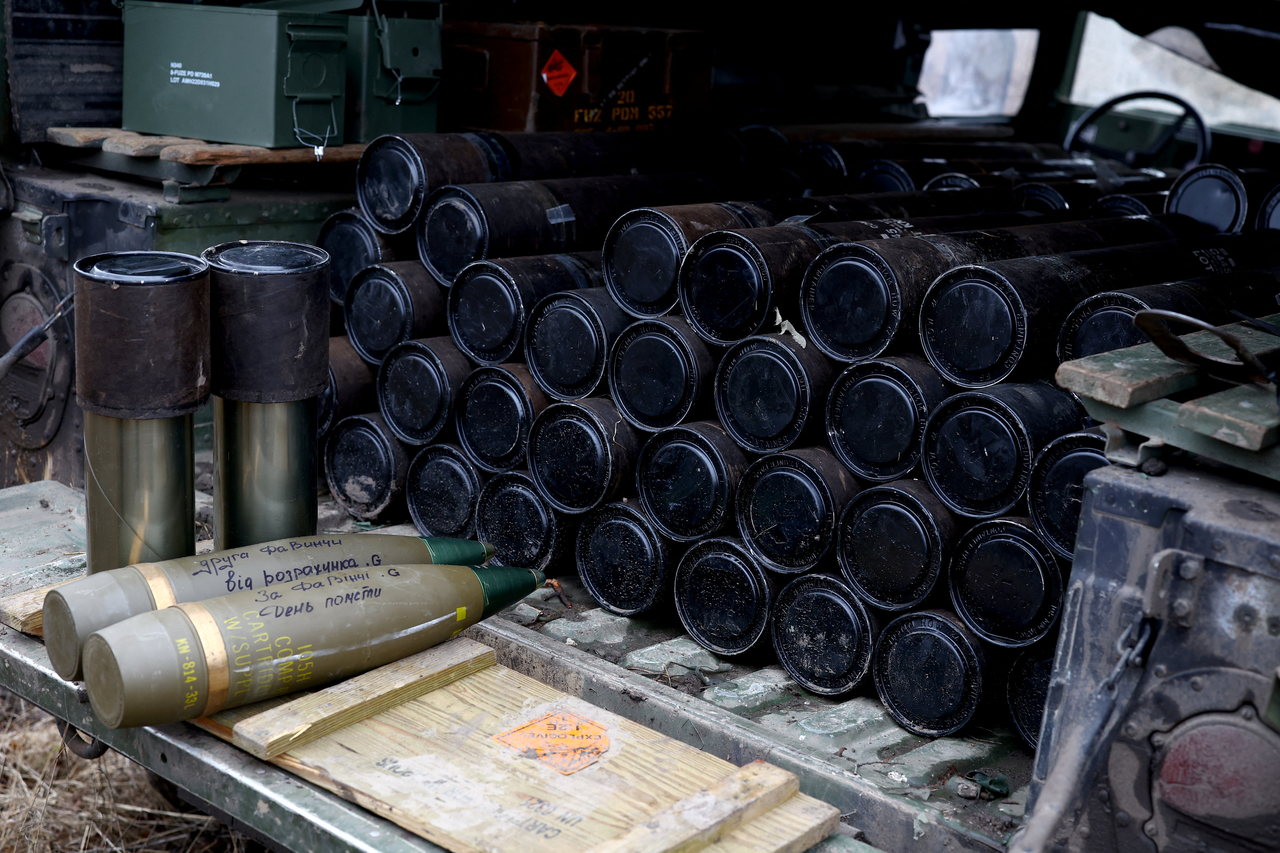EU Plans for Increased Ammunition Production
On 23 March, EU leaders accepted a plan to increase the delivery of artillery ammunition to Ukraine and reconstitute Member State stockpiles. This should free-up still-available reserves for Ukraine and lead to a higher level of ammunition production in Europe. It is another EU initiative for military assistance to Ukraine financed from European Peace Facility (EPF) funds. The success of the plan demands further engagement by the Member States and EU institutions to change the current operating mode of ammunition producers in Europe.
 LISI NIESNER / Reuters / Forum
LISI NIESNER / Reuters / Forum
Why did EU leaders accept the plan to increase ammunition production?
Heavy artillery is crucial to Ukraine in fighting Russia and it requires record consumption of ammunition shells and rockets. Russia has much more potential and is using up to 20-25,000 shells per day, while Ukraine fires about 5-7,000 shells per day. While the EU and NATO have delivered to Ukraine a huge volume of shells, mainly from stockpiles, the challenge now is to ensure an adequate level in the second year of the war. Ukraine and Europe have almost emptied their stocks of Soviet-era 122mm shells and the main burden of Ukrainian artillery firepower has turned to about 350 NATO 155mm howitzers. Within the EU and NATO, there are many issues with but also instruments for increasing the production of shells for Ukraine and augmentation of partners’ strategic reserves. These had been discussed, but so far with a lack of visible and detailed initiatives. The latest EU plan is based on a proposal put forward by Estonia in February to grant projects to ramp up production, backed by up to €4 billion.
What are main assumptions of the EU plan?
It recommends parallel efforts in three areas. The first is aimed at increasing 155mm shell deliveries to Ukraine from industry stocks and the strategic reserves of EU Member States. The EU wants to ensure the delivery of 1 million shells in 2023 paid for with €1 billion from the EPF to finance the costs to donors supplying ammunition to Ukraine. The second seeks to fill gaps in 155mm ammunition reserves through joint procurement by the European Defence Agency (EDA). Although the EDA has 27 members, there are 22 EU members and Norway (not formally a member of the EDA or EU) ready for this joint procurement project. It will be coordinated by the EDA and founded from the EPF, also at the €1 billion level, and the project is open for additional countries. The third area is aimed at increasing defence industry production levels, reversing a trend seen in the last three decades. The EDA wants to use fast-track procedures for joint procurement of 155mm ammunition through the end of 2024 and to procure other types of ammunition in the 2023-2030 period. The EDA is already in negotiation about the details of the whole plan with at least 15 companies from 11 EU Member States.
Will the EU initiative help strengthen Ukraine’s military?
Implementation of the first track of the EU plan might improve the military situation of Ukraine in 2023, ensuring at least 2-3 months of current ammunition consumption. At the same time, and on much larger scale, the U.S. also will provide 155mm shells. Taken together, these should reduce the risk of any disruption in deliveries while the peacetime industry gears back up and help finance the increased costs of explosive materials, other materials, and metals for new ammunition shells from Europe and the U.S. These efforts should be accompanied by additional transfers of reconnaissance drones and counter-artillery radars that give higher precision and economy to Ukraine’s artillery fire. Such comprehensive assistance to Ukraine might balance the ammunition disproportion with Russia and help in preparations for counter-offensives. So far, Russia has been using intense but imprecise fire. It was forced to make a three-fold reduction in ammunition consumption, from 60,000 shells per day to the current 20-25,000 shells per day. To maintain even this lower rate, along with mobilisation of its defence industry, Russia has been forced also to use expired shells, ammunition from Belarus and North Korea, and request similar assistance from China.
Will the ammunition plan strategically augment EU stocks?
Since February 2022, the EU has been supporting efforts by those Member States delivering the necessary military assistance to Ukraine. That is why the Union decided to use funds from an instrument like the EPF to finance the costs to these states of their military assistance to Ukraine, for instance, deliveries of T-72 main battle tanks. These deliveries have already consumed about €3.5 billion of the €7.9 billion planned for the 2021-2027 period, and have financed up to 59-85% of the costs of some of the arms deliveries. The importance of this type of EU initiative may increase if Europeans can ramp up defence industry production to levels sufficient also for deterrence and defence vis-à-vis Russia in the long term. The success of the latest and future initiatives depends on strong political support by EU Member States and their own incentives for local defence industry. Only France publicly stresses the need for testing, revising, and changing industry mobilisation procedures, and some of the European industry’s issues will not be fixed in the near term even with an influx of additional funds. For instance, Germany, with its hugest industrial potential in Europe, is still lacking the political will, direction, and incentives for its defence sector to invest in additional production lines. That is why the burden of further augmentation of EU defence industry seems to be more in the hands of other ammunition plan supporters and awaits better coordination by the EDA and European Commission.


